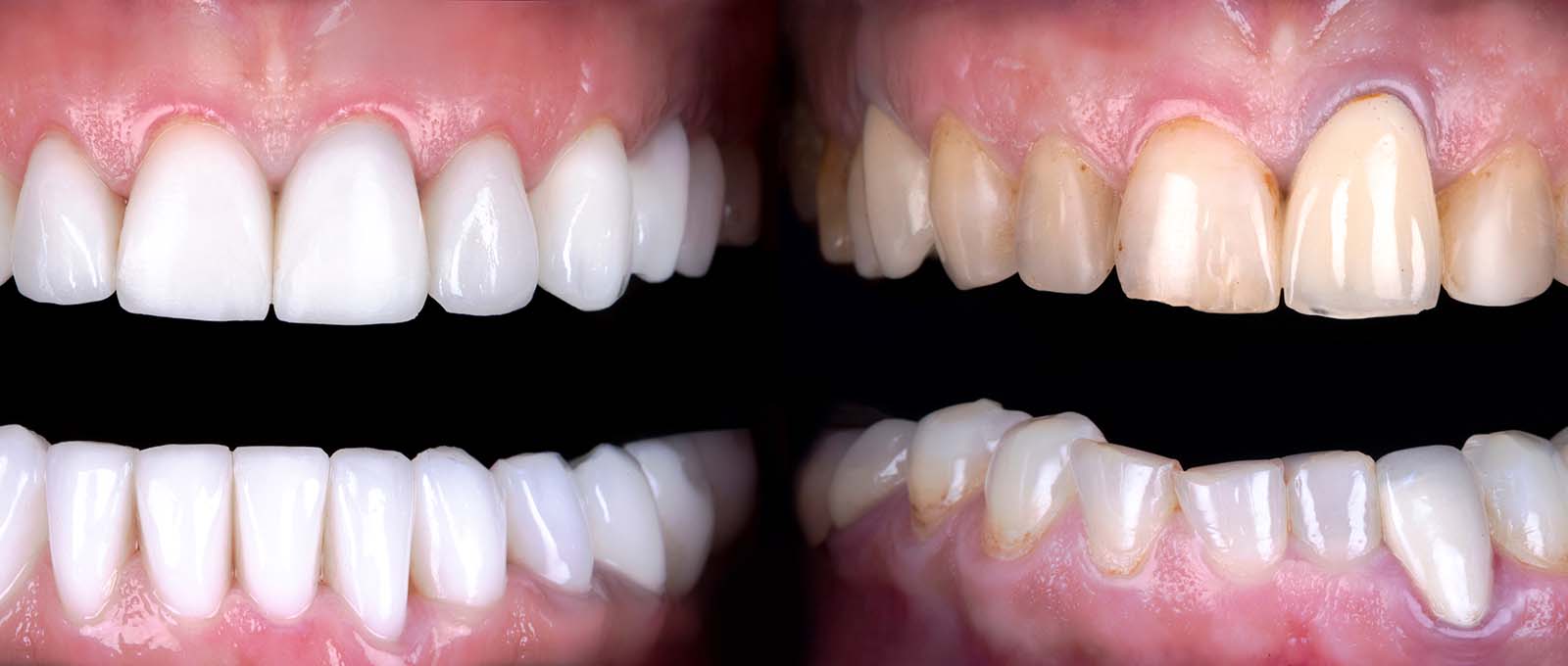A Comprehensive Guide To Dental Filings For Los Angeles Residence
If you have the tell-tale signs of a cavity or know for a fact that you need a filling, you probably have dozens of questions. This guide on dental fillings covers everything on the topic of fillings to help you better understand the procedure, your options, and to answer some questions that you might not want to ask your dentist. When looking for dental fillings Los Angeles, it’s vital that you know everything you can before heading into a dentist’s office.
What is a Dental Filling
A dental filling is the standard procedure for treating a cavity. When the tooth decays, it loses both shape and function. Cavities make the tooth lose their shape, and the tooth becomes more susceptible to sensitivity and damage. A dental filling is a way for the dentist to help restore the shape of the tooth and prevent disease or further damage.
Dental fillings in Los Angeles will include some of the best dentists around when it comes to cosmetic work. However, a dental filling serves a much more important purpose than aesthetics.
A dental filling will close the exposed tooth off so that bacteria and foreign matter such as food cannot get into your tooth. The filling will also play a significant role in preventing future decay.
Fillings can use different materials, and the quality of the filling can vary wildly on the dentist. The different types of materials all have various benefits and downfalls, but a skilled and knowledgeable dentist will be able to help you decide which filling type is best for your teeth.
When Does Someone Need a Dental Filling?
Cavities are the primary reason for needing a dental filling. But, other reasons can include small holes that can naturally occur in teeth from age or even a fractured tooth. Occasionally dental fillings are an option for discoloration. Finally, although it’s rare, aging can cause a tooth structure to deteriorate without cavities forming, dental fillings can help restore the initial tooth structure.
You should always meet with your dentist first to identify the root cause of the discomfort your experiencing. Tooth pain or sensitivity isn’t always a cavity, although many times whether it’s a cavity, loss of structure, naturally occurring holes, or fracture.
The discomfort or outright pain that comes with any of these issues are similar. The common complaints that result in the patient needing a filling include targetted tooth pain or tooth pain in one particular spot. Tooth sensitivity is another reason that many people require fillings. The loss of a tooth structure or a cavity can expose the nerves inside the tooth making both hot and cold sensations seem overpowering and painful.
Other, but less common, complaints include visible discoloration of your teeth, visible openings in your teeth and tolerable but noticeable discomfort when eating or drinking. If you’re experiencing any of these symptoms be sure to schedule a dentist appointment soon. Dental fillings can cover a wide variety of dentists, be sure to discuss your options before committing to fillings to ensure that your dentist will help you decide what choices are right for you.
Many people go into a dentists office thinking they have a cavity and receive the stunning news that it’s an entirely different issue at hand. The times when you don’t have cavities is when you not only need to repair the current problem but also plan a new dental hygiene routine.
Age, eating habits, dental hygiene habits, and chance are all aspects of life that factor into whether or not you need a dental filling. Your dentist can help you understand what led you to require a dental filling and how you can prevent or delay the need for further dental repair.
Different Types of Dental Filling Materials
Dental practices have come a long way in the past 100 or so years and silver, although still available is not the only option for filling materials anymore. There are many different types of dental filling options including porcelain, fold, amalgam (silver), composite resin and even plastic. Of course, not every dentist works with all of these materials and some may not be available to you. Dental fillings Los Angeles will likely have a large variety for you to choose from, but if you want a specific type of filling be sure to ask your dentist about what options are available in their office before you book an appointment.
Gold Fillings
Gold fillings aren’t the first choice for many people, but there are some definite advantages. When it comes to durability and strength, you will have a hard time finding something better than gold. The material can hold up against chewing forces for up to ten or even fifteen years.
Benefits of Gold Fillings:
- Durable
- Withstands regular chewing force
- Lasts for 10 or more years
Downside to Gold Fillings:
- Expensive
- Does not match tooth color
- Requires multiple visits for filling
- The possibility of Galvanic Shock
The downsides to using gold for dental fillings can be too much for some people. They are expensive fillings, and they still don’t match any natural tooth color. Additionally, placing a gold filling requires a minimum of two dentist visits.
Finally, Galvanic shock, although a rare occurrence, is a possibility. When fold and silver are next to each other, they may interact with the saliva to create an electric shock.
Amalgams – Silver Fillings
Silver fillings have many of the same benefits of a gold filling at a fraction of the cost. However, silver fillings are known as an eyesore, but you won’t be looking at them too much! You should expect a silver filling to last for at least ten years, and hold up to conventional chewing forces without issue.
Benefits of Silver Filling:
- Durable
- Easily holds up against chewing forces
- Less expensive than other filling options
- Lasts for ten or more years.
Downside of Silver Fillings:
- Visually unappealing
- Can cause the rest of the tooth to take on a greyish color
- May require the dentist to shave down healthy parts of the tooth to fit the filling.
- Expansion and contraction due to temperature may lead to tooth cracks of fractures.
Tooth-Colored Composite Fillings
Composite fillings are a favorite among those who spend a lot of time in front of cameras or speaking in front of people because they match the color of the existing teeth. Composite fillings are excellent for front teeth or areas of the teeth that are visible from a generally close distance. Additionally, they are more versatile when it comes to repairing fractured or damaged teeth.
Finally, many people will choose tooth-colored composite for children who have their permanent teeth or teenagers because it calls for less removal of the tooth structure. While silver and other filling materials require removal of slightly more than the damaged or decayed area of the tooth, a composite involves removal of only the decayed areas.
Benefits of Composite Fillings:
- Versatile in repairing fractures, holes, and structural damage.
- Requires less removal of healthy tooth structure.
- Will chemically bond to the tooth structure rather than “sit” inside of it.
- Visually appealing.
Downside of Composite Fillings:
- Typically only lasts for five years.
- The process can take a minimum of 20 minutes longer than standard filling.
- Fillings may chip
- A composite filling may require multiple dentist visits.
- Cost of composite fillings is much higher than other options.
Other Filling Types
Depending on the needs of your tooth and your dental hygiene habits a dentist may recommend that you use ceramic or glass ionomer for filling material. Ceramic, although expensive is often well-worth the investment. As the longest lasting tooth filling, the material will stand up to chewing and regular wear for at least fifteen years. But, the material can cost as much, or more than gold.
Glass ionomer uses a blend of glass and acrylic that over time, releases fluoride to help protect the tooth from further decay. But, the material is not as sturdy as even resin and will only last for a few years. Usually, a glass ionomer filling comes into play when you need a filling at or just below the gumline where there is nerve exposure. Additionally, glass ionomer is very common for young children who will lose their teeth soon. Rather than opting for even silver, using a glass ionomer will usually only last for the time it takes for the child to lose their baby teeth.
Steps for Tooth Fillings
Treating cavities, tooth fractures and natural tooth structure deterioration may have slightly different processes. You can see some of the differences below, but much of the procedure is the same. This procedure is what most dentists do all day!
Step One: Local Anesthetic
Every procedure will start with the dental assistant or dentist giving you a local anesthetic. A local anesthetic will not put you to sleep. The local anesthetic will come in two steps. First, a numbing gel will sit for a few minutes to numb the area around your nerves in your mouth. Then after the numbing gel is in full effect, the dentist will use a syringe to inject a more powerful, and longer lasting local anesthetic. Dentists inject the anesthetic in and around specific areas including the base of your gumline, where your gums meet your cheeks and even into the roof of your mouth. This pattern helps the local anesthetic work quickly, and ensures that you won’t feel a thing!
The injections are not painful, but many patients note that they can feel the pressure of the needle. This is a normal sensation.
Dentists will not usually “put someone to sleep” for a dental filling.
Step Two: Grinding, Shaping or Repair
Because dental fillings can serve different purposes the second step of the filling process will vary slightly.
If you’re getting a filling for a cavity, the dentist will use a drill, a laser, or an air abrasion instrument to remove the dead areas of the tooth. Drilling is not painful, but many patients mention the noise of the drill is uncomfortable. Whether your dentist uses a drill, laser or air abrasion instrument, you should expect the dentist to spend some time working on removing all the decayed parts of the tooth, or in some cases teeth.
For small holes in teeth or age deterioration, the dentist will likely want to shape part of the tooth to ensure that the filling will look aesthetically similar to your other teeth. Fractures as well may require some shaping.
There isn’t any guarantee what instrument your dentist will use because dentists will often favor one tool over the others. Their comfort level with various tools will dictate what they choose to use for your needs.
Step Three: Probing
After drilling and shaping, the dentist will use a metal probe, a tool you’ve probably seen before, and will ensure that all the decay is gone. If you’re not getting a filling to remedy a cavity, the dentist may still probe the tooth to better assess the structural damage to the tooth from age or fracture. Probing helps the dentist better understand how they will fill your tooth and what approach to take.
Step Four: Filling
Typically the filling process is straightforward; the dentist will pack the filling material into your tooth. Sometimes a dentist may use a glass ionomer to protect your tooth’s nerve if they can see the exposed nerve. After the filling is in, the dentist will move on to the final step. However, if you’re opting for a tooth-colored filling option this step is more time consuming and a little more complicated.
For tooth-colored fillings, the dentist will need to place the filling material in with thin layers and cure each layer as they work their way through the process. The filling material will set under a special light, and the dentist will continue to add layers and use the light to cure them until they are satisfied with the filling.
Step Five: Polishing and Final Restoration
Although most dentists will urge a patient to have their teeth cleaned while getting a filling, if you don’t have the time or just had a cleaning done, they will at least polish the area of your filling. They will also buzz off any extra material and ensure that the shape fits the rest of your teeth. This step is vital for you to communicate with your dentist if your tooth feels too large, or oddly shaped, let them know!
Frequently Asked Questions for Tooth Fillings
Although you can read through the steps of the procedure and research the material options you probably still have a lot of questions left. Here are some of the most common questions, however you should always check with your dentist before you make any final decisions.
Does Insurance Cover Composite Fillings?
Yes, and no. Many insurance companies will cover part of the cost of a composite filling usually matching what the price of a silver filling. The patient usually has to pay the difference between the expense of the silver filling and the final price of the procedure.
What are Indirect Fillings?
Indirect fillings aren’t the newest thing in dentistry and although they are visually appealing many patients find them inconvenient.
An indirect filling is similar to a composite filling, but instead of the dentist curing the multiple layers of filling material, they will take an impression of your tooth after they drill out the decay and finish its shape. While you wait for your final filling, the dentist will put in a temporary filling that they will remove during your second visit, and then they will fit in your permanent, indirect, filling. They fit these fillings with cement, so they aren’t going anywhere!
There are two different types of indirect fillings an Inlay will sit into the tooth, and an Onlay will sit over the tooth. You may have heard of an Onlay called a Crown or a partial Crown.
What is a Temporary Filling and Will I Need One?
It’s not common to need a temporary filling if you’re not choosing an indirect filling option. But, if the pulp inside your tooth becomes irritated your dentist may need to schedule a second appointment so that they can ensure the filling sits entirely inside your tooth. At that time you would need a temporary filling. Another reason for needing a temporary filling is if you needed a root canal. During root canals, the pulp will become irritated and filling the tooth at that time is not possible.
How Do I Care for My Teeth After Fillings?
Any dentist will encourage you to practice good oral hygiene that includes brushing after meals or at least twice a day, using a non-whitening toothpaste, flossing regularly and using an antibacterial mouthwash. These practices are the standard for dental health.
However, if you notice that your filling doesn’t fit well in your tooth or that the tooth becomes extremely sensitive, you should seek help from your dentist immediately because it may have come loose or cracked.
How Can I Prevent Needing Dental Fillings?
Good dental hygiene is the only way to prevent dental fillings. However, there are still some aspects left to chance. Misstepping a stair, or curb can cause you to fall and fracture a tooth resulting in a filling. You could practice excellent dental hygiene for years, and they still have holes appear in your teeth from aging.
Dental fillings are not always preventable.
Are Silver Fillings Safe?
Silver fillings or Amalgam fillings are safe however there were many concerns over the last few decades. Amalgam fillings contain trace amounts of mercury which many people believe causes Alzheimer’s, autism, and multiple sclerosis. None of these claims have substantial evidence, and the American Dental Association’s official statement is that there is no proof that Amalgam fillings link to any of these issues.
The Food and Drug Administration with many other public health agencies supports the American Dental Association pointing out that there’s no scientific basis for these claims.
However because mercury is known as a harmful substance and is present in Amalgam fillings many dentists will recommend people with compromised health, pregnant women, and children choose a different filling option.
What are Some of the Common Problems with Dental Fillings?
Immediately after the procedure, you’ll likely have some minor tooth sensitivity especially to pressure. It may be uncomfortable to chew for a few days. However, the sensitivity should go away within a week or two. After two weeks if you still have sensitivity, you should go back to your dentist so they can assess the problem.
The other common complaint with fillings is that they don’t “fit” right, meaning that your dentists may need to shape the filling more to accommodate your bite. This issue is easy to fix and usually will not result in another charge.
Contact Southland Dental Care Today
If you’ve spent time searching dentist near me online and still can’t decide on an office, choose a dentist that is willing to answer all of your questions. Call our office today for a consultation. We’ll work with you to achieve better dental health before and after your fillings.
Related Articles:
- The Definitive Dental Implant Guide for Patients in Los Angeles
- Dental Implants Surgery in Los Angeles
- Top Dentist Near Me in Los Angeles | Find Trusted Dental Care at Southland Dental Care
- Full Mouth Dental Implants Cost
- All-On-4 Dental Implants: Are They the Optimal Choice for You?
- How to Afford the Cost of Dental Implant Procedures
- Frequently Asked Questions About Dental Implants
- What Types of Dental Implants Treatment Do I Need
- Dental Implant Complications and Failure
- Comparing Dental Implants with Other Types of Tooth Replacement Options
- Full Arch Dental implants in Los Angeles, CA
- What can you do for missing teeth in 2023?
- Top Rated Dental Implant Surgeon in Los Angeles
- We Offer The Best Dental Implants in Los Angeles
- The Myth behind $1000 dental implants
Request a Free Consultation
Tel: 818.788.8787
Related Posts
Related Articles:
- The Definitive Dental Implant Guide for Patients in Los Angeles
- Dental Implants Surgery in Los Angeles
- Top Dentist Near Me in Los Angeles | Find Trusted Dental Care at Southland Dental Care
- Full Mouth Dental Implants Cost
- All-On-4 Dental Implants: Are They the Optimal Choice for You?
- How to Afford the Cost of Dental Implant Procedures
- Frequently Asked Questions About Dental Implants
- What Types of Dental Implants Treatment Do I Need
- Dental Implant Complications and Failure
- Comparing Dental Implants with Other Types of Tooth Replacement Options
- Full Arch Dental implants in Los Angeles, CA
- What can you do for missing teeth in 2023?
- Top Rated Dental Implant Surgeon in Los Angeles
- We Offer The Best Dental Implants in Los Angeles
- The Myth behind $1000 dental implants











